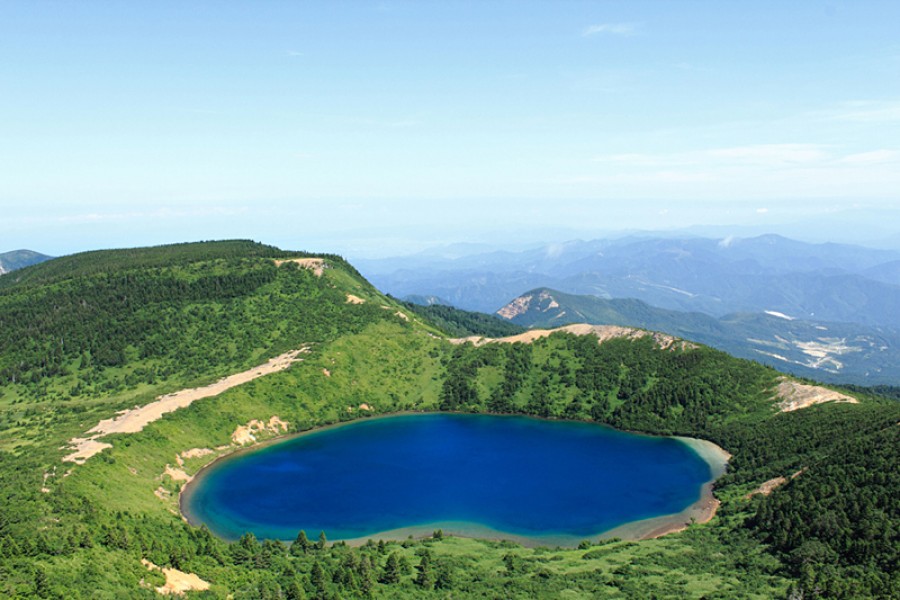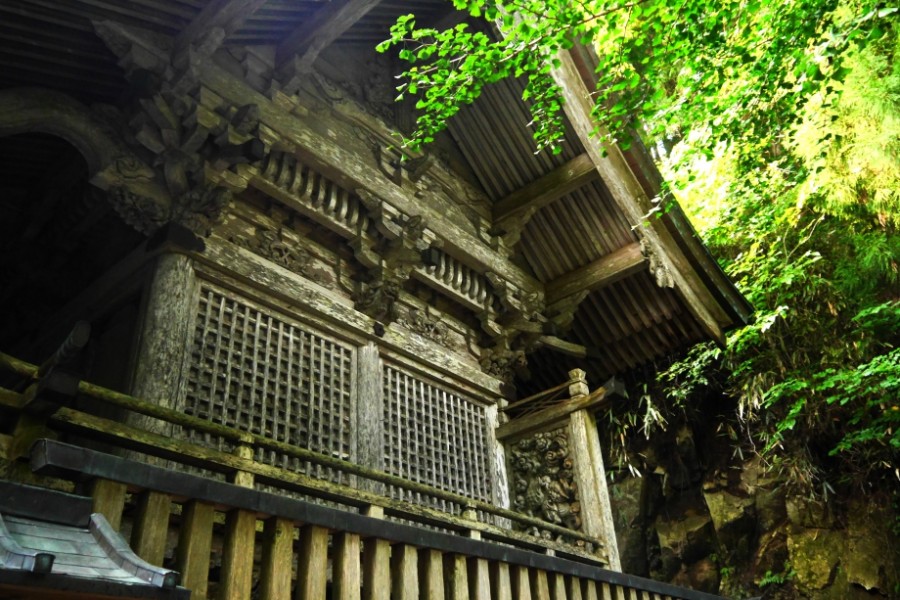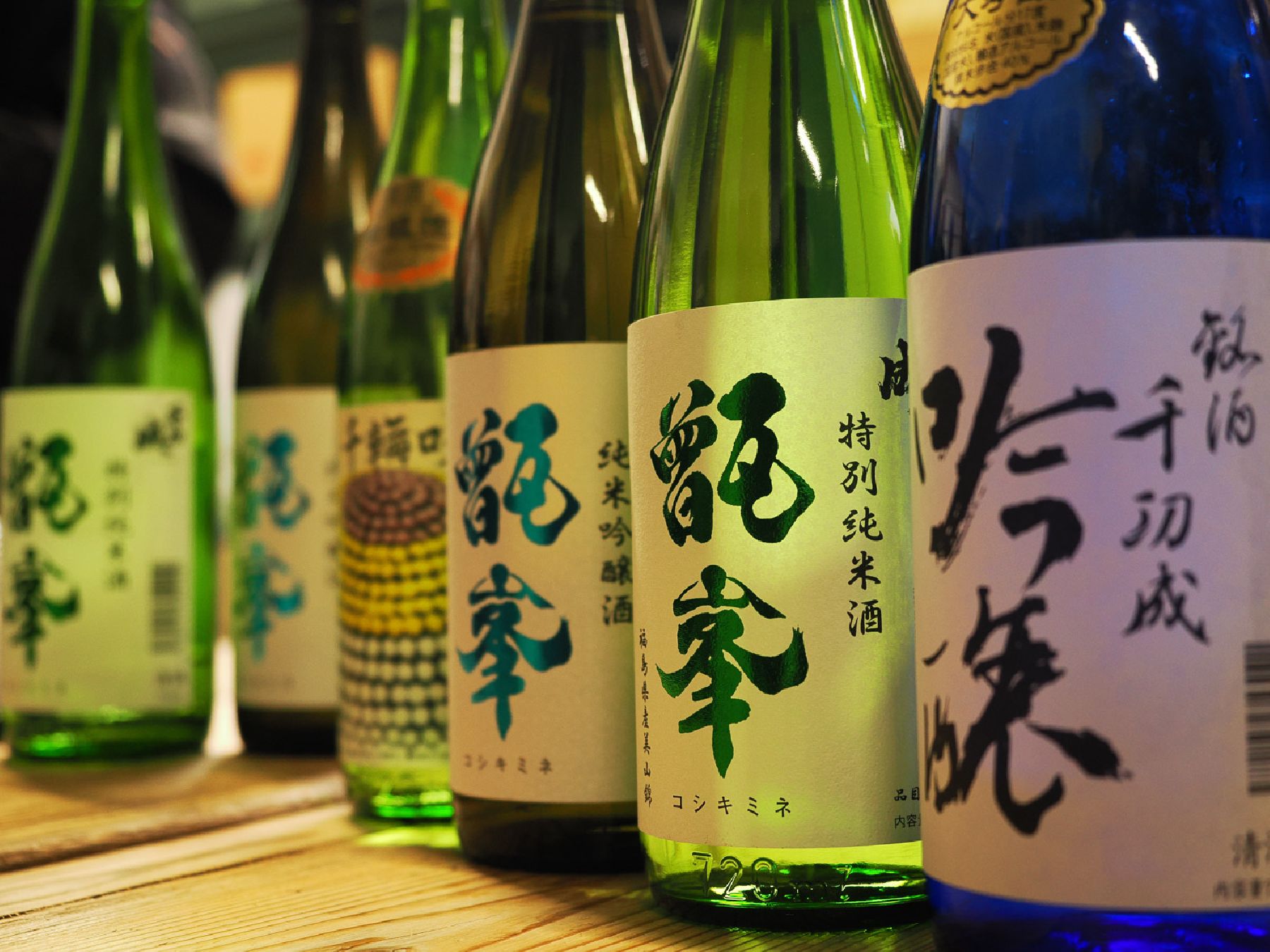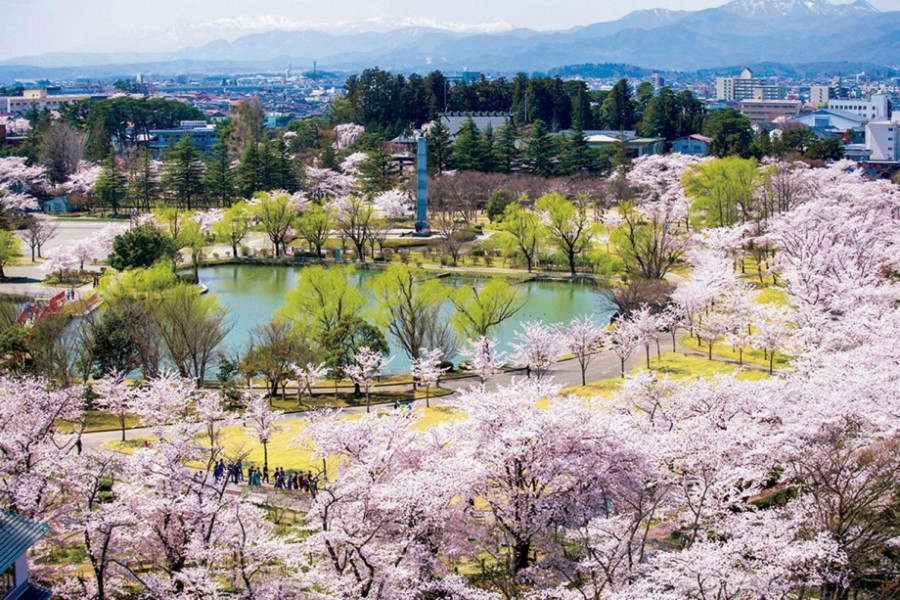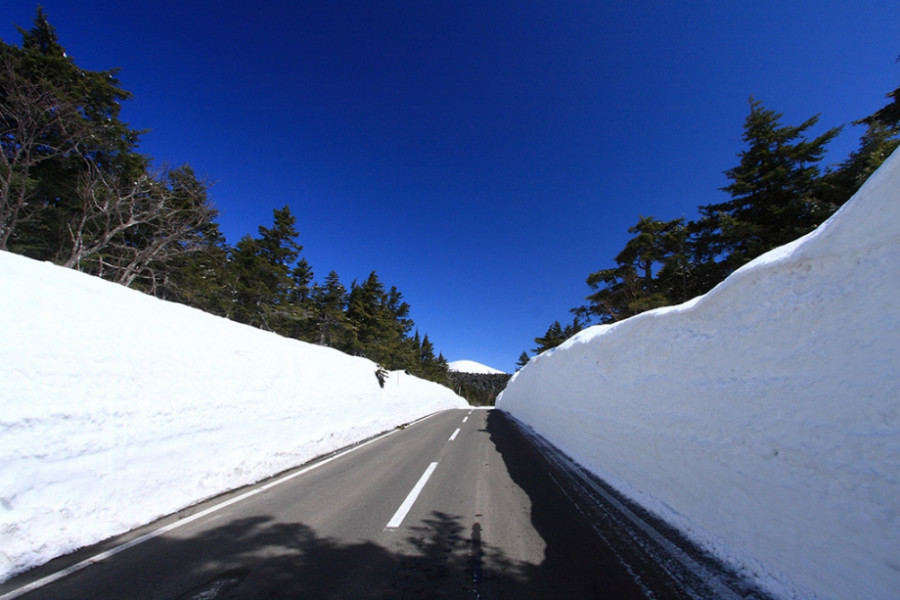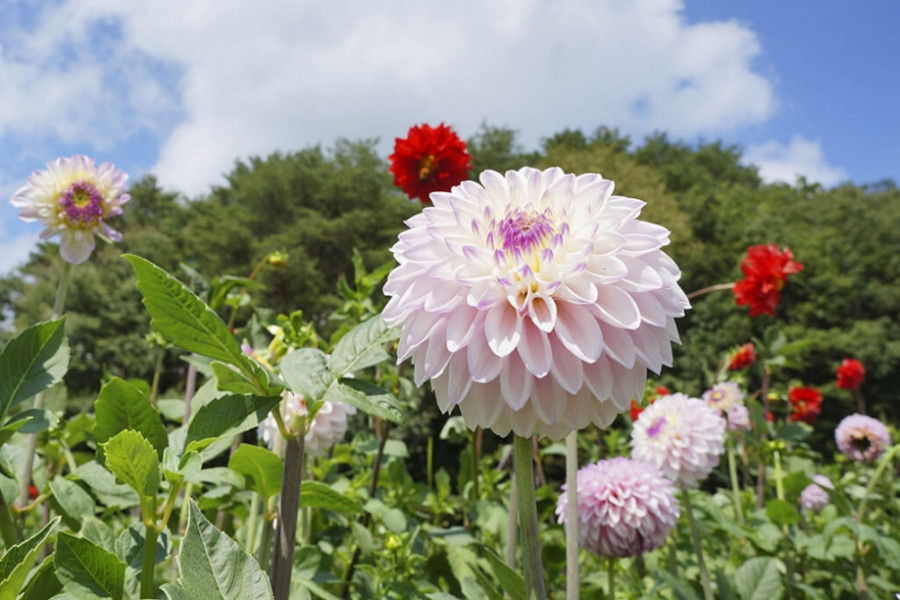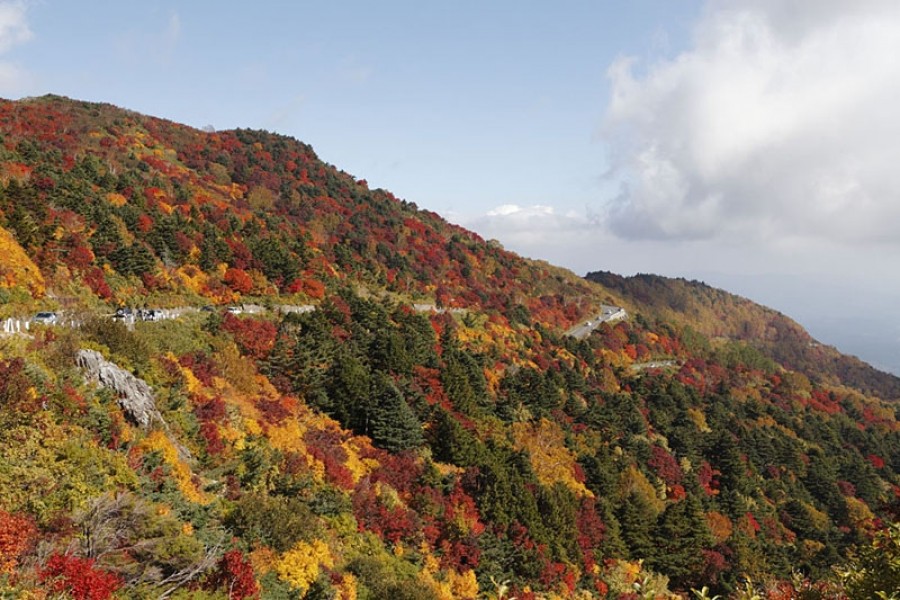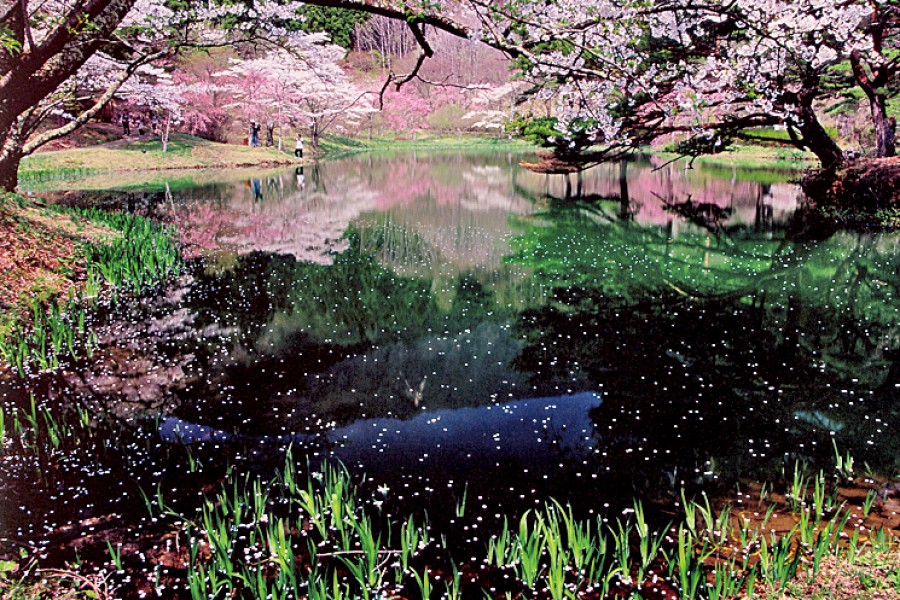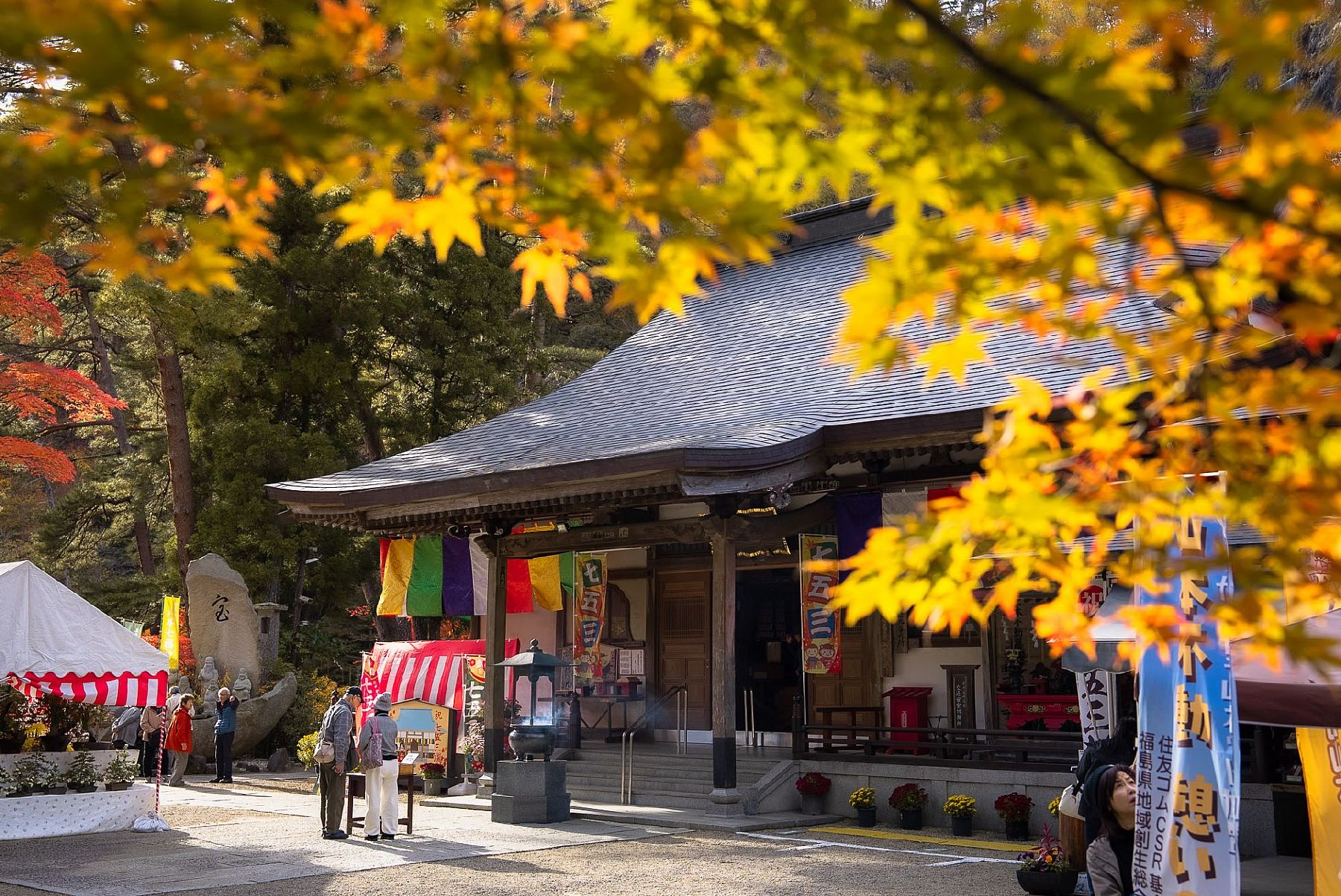
Yamamoto Fudoson Temple
Yamamoto Fudoson Temple was built over 1000 years ago in a rocky cavern. The temple can be reached by taking paths lined with century-old Japanese cedar trees, and climbing a 130-step stone staircase. The cave that makes up part of the Yamamoto Fudoson temple grounds is where the Buddhist deity enshrined at this temple is worshipped. Yamamoto Fudoson Temple is located in Yamamoto Park. This park is centered in a valley – 5 km of which is designated as an Okukuji Prefectural Natural Park. A wonderful place for flower-viewing throughout the year, this area is also great for experiencing beautiful autumn leaves.
